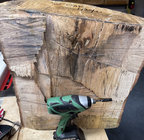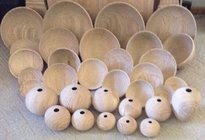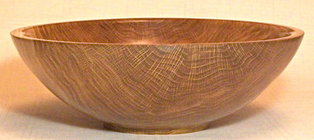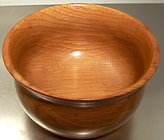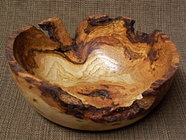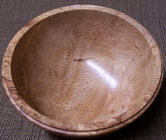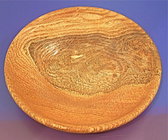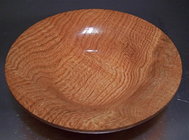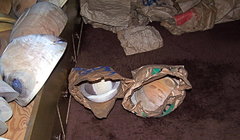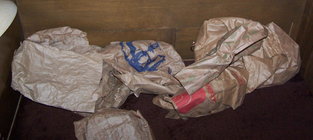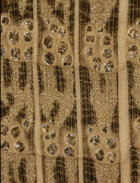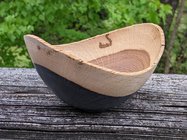if, by the term "bucking", you mean that after you do one of those cuts, stop the lathe and feel the cut you just made, it feels bumpy/wavy , then A) your gouge is not sharp enough, and/or B) 1/8" cut is quite a deep cut relatively for a finish cut - I get the same thing with Ash , which is a very similar grain structure to oak, and have to re-sharpen much more often, and take lighter cuts (1/16" deep or less) if I want to get a good finish. You may also discover the same "wavy" result when sanding on the lathe if you spend too long on any given grit. Ash and Oak for two , seem to have different degrees of hardness between the growth rings and the wood around them..
I have found, if you even so much as think your gouge is not sharp enough, it probably isn't - it's helpful to first have the experience of what it feels like to have a truly sharp gouge in hand (typically if you get a hands-on mentor or demo) to judge how sharp you are getting your tools. (Something I learned rather quickly when I finally spent some bucks on a new plane blade for my No. 4 smoother, got mine from Hock, and they come sharp out of the box - first time I used it, I knew my so-called razor-sharp plane blades that I'd sharpened myself were no where near sharp!) - Once I figured that out, I took a lot more time at the grinder paying much more attention to my techniques (and later, after I got a 180 grit CBN, got even better results) to where I can finally have some confidence that I've gotten my gouges pretty durn sharp, and can feel the difference as soon as they start to get dull.
As far as the O.P. goes, I have seen the same thing with a piece of locust, and have had that same cracking happen on flat sawn oak lumber that I could have sworn was dry. (made a laminated handle of 2 pieces of that oak sandwiching a piece of cherry... took it into the house and the oak insisted on warping, pieces curled apart and literally ripped the cherry in half as the oak curled away from each other while it dried even further) - I think the main thing would be to try and stabilize the wood as much as possible by heavily sealing the end grain immediately after cutting off the ends (even if cracking isn't visible) which seemed to work for me on a couple pieces of Ash wood I was trying to preserve for later.
